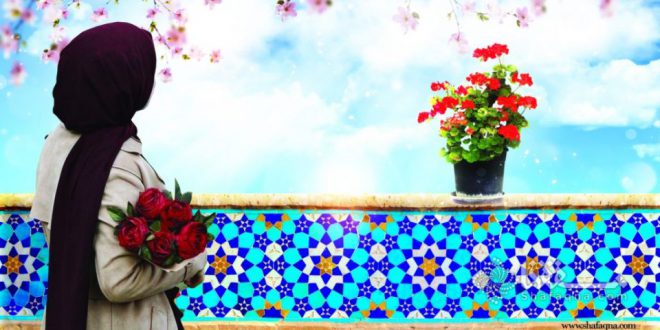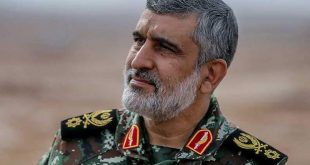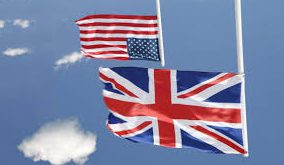Modest fashion is a term used for women from various religious and cultural societies who cover up to avoid showing off their bodies. But in modern world it refers mostly to Muslim Hijabi women. Islamic dressing is based on Islamic practices such as covering a specific set of body parts. In recent decades, the rising desire to include such specific clothing items resulted in Modest fashion which is now a growing industry and one of the key sectors of global Islamic economy.
Hijabi fashion, also known as modest fashion, can be interpreted in several ways but, simply stated, it is clothing which conceals the body instead of accentuating it. It includes hijabs and burkas but also loose-fitting tops or jackets and dresses with high necks and ankle-skimming hems.
Islamic fashion as a phenomenon stemmed from the combination of a set of Islamic practices (in which the need to cover a specific set of body parts is present) and of the rising need and desire to include these specific clothing items in a broader fashion industry. The global growth of “an Islamic consumer sector, which explicitly forges links between religiosity and fashion, encouraging Muslims to be both covered and fashionable, modest and beautiful,” is relatively fresh: Islamic Fashion as a particular phenomenon started appearing toward the 1980s [1].
Fashionable Hijab
Hijab wearing is one of the interesting social transformation. It could be observed recently that hijab as Islamic sharia and a form of fashion are mixed to become fashionable hijab. This trend was followed by the emerging of several communities celebrating the fashionable hijab theme. One of such community is Hijab Community Bandung (HCB) [2].
Islamic fashion in general is understood as women wearing modest clothing with long sleeves, descending to the ankle and having a high neckline. The outfits are non-hugging, with some form of head covering that could be draped in a variety of styles. Women who prefer to wear pants combine them with a long sleeved top that has a high neckline, along with a head covering.
Over time, national and international designers came to be involved in the sale of chic Islamic fashions. Today, Muslim fashion is a lucrative global industry with countries such as Indonesia, Malaysia and Turkey leading the way outside the Western countries.
This growth has had its share of controversies: Many designers use the term “Islamic” for their clothing. Religious conservatives and Muslim scholars have raised questions about what types of apparel would fit that category and whether defining clothing as “Islamic” was even permitted or lawful by Islamic principles – a concept known as “halal.”
In particular, critics have objected to the fashion catwalk presentations, which actually draw the gaze and attention of spectators to the bodies of models, while the purpose of a hijab is to distract and move the gaze away from the body. [3]
People practice modest fashion regardless of their religious faith
People practice modest fashion regardless of their religious faith (Lodi, 2020; Hassan & Harun, 2016; Shirazi, 2020). However, many corporations market modest fashion toward Muslims (El- Bassiouny, 2018; Hassan & Harun, 2016; Lodi, 2020; Shirazi, 2020) because they believe that Muslim and Middle Eastern communities are wealthy (Lodi, 2020; Shirazi, 2020). This indicates that the global fashion industry targets Muslim consumers in large part for financial incentives (Bahrainwala & O’Connor, 2019; Lodi, 2020; Shirazi, 2020).
The commodification of Islamic clothing is becoming a global practice; however, it is increasingly seen within Western fashion conglomerates (Lodi, 2020; Shirazi, 2020). Moreover, modest fashion that is marketed toward Muslim women are sometimes labelled as halal, which is an Arabic term to describe things that are permissible in Islam (Shirazi, 2020). These labels are controversial within the Muslim community (Shirazi, 2020). Many of the Islamic garments that are targeted toward Muslim women follow the trends of each season; however, they are often modified to be worn by veiled Muslim women (Shirazi, 2020).
Modest dressing
Modest dressing is integral to various religious and cultural societies, though interpretation varies. Broadly speaking, adherents cover up to avoid showing off their bodies. Necklines tend to be high, hemlines low. Designs are generally more loose-fitting than figure-hugging, while ranges may incorporate head coverings.
“Modest fashion is a catch-all term for the different ways in which women from diverse religious communities clothe their bodies in accordance with their interpretation of religious teachings,” explains Reina Lewis, centenary professor of cultural studies at the London College of Fashion.
Professor Lewis who has authored numerous books on the subject, including Modest Fashion: Styling Bodies, Mediating Faith, says: “It’s certainly getting a lot easier to shop. Globally, Muslims are a youthful and growing population with significant numbers in the so-called emerging markets. Modern brands want to sell them everything from fridges to footwear.”
“Access to modest fashion has improved tremendously over the past decade”
Hafsa Lodi, a journalist and author of Modesty: A Fashion Paradox, says: “Access to modest fashion has improved tremendously over the past decade”.
“Mainstream retail sites have specific sections on their websites for modest wear — where modesty-conscious women previously had to hunt through pages of garments for skin-covering clothing, they can now find instantly within these easy online edits,” she says to Religion Media Centre.
“Social media has played a huge role in normalizing and modernizing traditional modesty guidelines in mainstream fashion. Just search #modestfashion on Instagram, and you ‘ll see nearly 4,000 results!
Modest fashion has gathered momentum from the ground up, while hijab-wearing models are no longer uncommon and numerous cities including London have played host to modest fashion weeks.
The internet has done much to challenge stereotypes, empower modest dressers and lead to an explosion in the market [4].
Modest fashion industry currently valued at £270 billion
The past few years has seen the hijab cement its status in the global fashion industry. From Nike’s Pro Hijab for female Muslim athletes to Tommy Hilfiger’s recently released version of the Islamic garment, more fashion designers and brands are starting to capitalize on what is now known as the ‘modest fashion’ industry, currently valued at £270 billion.
In the past, Muslim women living in the West had two main options when it came to clothing: they either had to rely on independent ethnic grocery stores importing hijabs from overseas, or had to create their own designs. Things gradually began to improve in the mid-2000s, when the term ‘modest fashion’ first came to prevalence, and designers began to realize the demand for more modern and fashionable options [5].
Cultural theorists focused on four primary functions of clothing; utility, modesty, immodesty and adornment (Jones, 2011). However, Sproles (1979) added four more functions: symbolic differentiation, social affiliation, psychological enhancement and modernism. In Islam, the way a person dress tells people that the person is a Muslim (Ismail, 2005).
Islamic fashion one of key sectors of global Islamic economy
The term “Islamic fashion” has been used largely for commercial purpose in today fashion. “Modest wear, Muslimah fashion and Syariah-compliant” are the three terms most often used interchangeably to reflect “Islamic fashion” (https://www.nst.com.my/lifestyle/ flair/2018/08/399195/when-fashion-banks-faith). The increasing demands of “Islamic fashion” and lifestyle has been reported due to the rise of Islamic population in the world (Global Islamic Economy Report 2015/16, http://www.dinarstandard.com/state-of-the-global-islamic-economy-report-2015/). This report also stated fashion as one of the key sector that contributes to global Islamic economy amongst other sectors such as food and beverage, Islamic finance, travel, recreation, pharmaceutical and cosmetics [6].
References
[1] Wikipedia, the free encyclopedia, Islamic fashion.
[2] Prihandini, P.; Ratna Suminar, J. (2017). Fashionable hijab as social transformation. Annual Conference of Communication, Media and Culture (ACCOMAC), 1 (1).
[3] Shirazi, F. (2017). How the hijab has grown into a fashion industry. The Conversation.
[5] The Growing Role of the Hijab in the Fashion Industry. https://mediareach.co.uk.
 صراط عشق صراط عشق
صراط عشق صراط عشق




